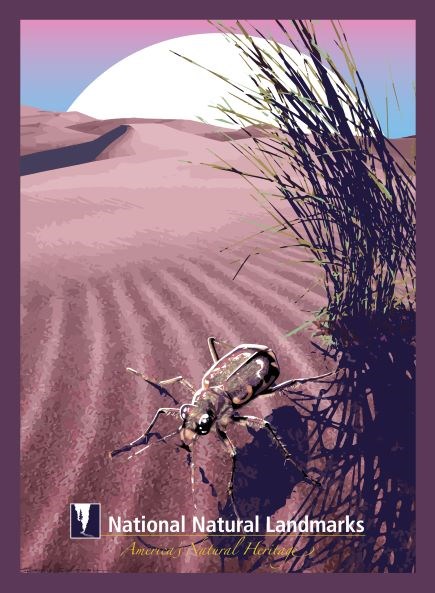
Sand dunes are the most recognizable landscape formed by eolian processes, but these features may be built up from sand or snow, or even eroded into rock, snow, or ice. Sand dunes are found along the coastal regions of our country as well as inland in arid and semi-arid regions. Easily recognized by their shape, most dunes have a similar profile: a long shallow angle facing into the wind, a peak or crest running along the top of the dune, and a steep lee side (away from the wind).
Despite perhaps seeming barren or unstable, eolian landscapes provide critical support to many ecosystems. Dunes are secured by plants such as sea oats that use their stems and roots to trap sand grains and stabilize the ground. Eolian dune landscapes are essential habitat for animals from beach mice to endangered leatherback sea turtles.
There are National Natural Landmarks designated for their eolian landscapes nationwide that illustrate the beauty and diversity of these ecosystems. Some of these include:
-
Eureka Dunes, CA
-
Loess Hills, IA
-
Muskeget Island, MA
-
Grand Mere Lakes, MI
-
Strangmoor Bog, MI
-
Albany Pine Bush, NY
-
Bear Island, NC
-
Big Hollow, WY
Last updated: December 3, 2025
